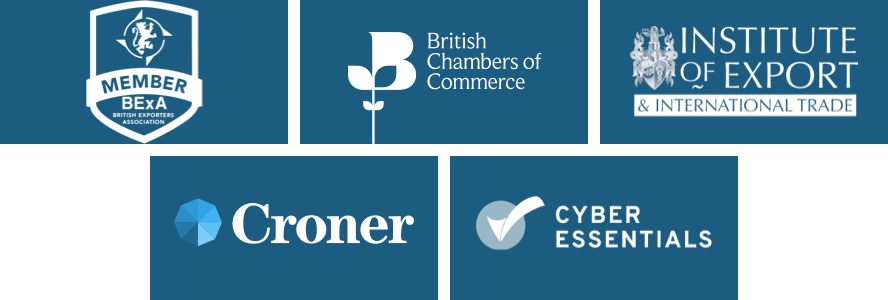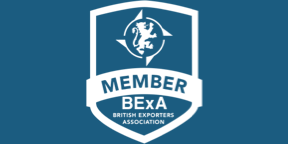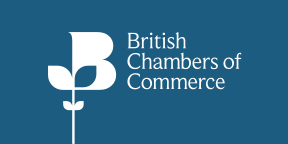BY:
SHARE:

Introduction
With the US's approach to its tariff measures shifting, here are some key pointers for a UK business looking for more clarity on how the US Tariff functions.
The importance of accurate classification.
Accurately classifying goods is an essential requirement for international trade.
Accurate classification on an export declaration identifies to the UK Customs authorities exactly what goods are being exported from the UK, and any possible Customs measures or licences required to make a compliant export.
Accurate classification is essential for imports as it identifies the goods being imported to the authorities and what duties, taxes, or import measures may be required to make a compliant import.
The global harmonised tariff system ensures that the first six digits of the Tariff code are uniform on 98% of internationally traded goods. Additional digits will be local to the importing country and will give further indication of any Customs measures applicable to the goods imported to that country.
Accurate Tariff Classification for goods entering the US is the importer's responsibility. Therefore, if a UK business exports from the UK under a DDP Incoterm® rule, the UK exporter will be responsible for paying accurate duties, taxes, and import charges into the US.
Using a US Agent to import into the US
In the USA, it is not possible to employ a US importing agent under Indirect Representation terms. The US uses a more formal and legal approach.
The foreign importer taking on the importer of record role must appoint an agent using a Power of Attorney (POA). The POA signed in the UK will usually include the submission of photo and passport details of the responsible UK person, who must agree to extradition and to paying any US fines levied on non-compliance. The POA also includes the agent as partly liable for fines/penalties.
A link to the US legislation on penalties for fraud and negligence is below:
19 USC 1592: Penalties for fraud, gross negligence, and negligence
Accessing the US Tariff and the US Tariff Structure
A link to the US Harmonised Tariff can be found here:
The U.S. Tariff Structure has no formal volumes but is organised by content. The content includes the General Rules of Interpretation, WCO agreed rules that direct how to classify goods, information on Free Trade Agreements, appendices that include statistical annotations, the Tariff Schedule itself, and Chapters 98 and 99 as part of the special rules and procedures section, which must be referenced when goods classification has been completed.
The chapters are set out in .pdf format for download, and classification should be harmonised to 6 digits. Therefore, if goods have been accurately classified in the UK, it will generally follow that the chapter headings in the US Tariff will be accurate to the first six digits of the classification code.
Chapters 98 and 99 of the US Tariff contain special classification provisions, temporary legislation, and additional duties that may affect goods imported to the US.
Once the 10-digit Tariff Classification has been identified on the US Tariff, the Tariff code must be checked in Chapters 98 and 99 for any import measures applicable to that Tariff Classification.
Chapter 98 (Special Classification Provisions)
Chapter 98 details duty-free or reduced duty provisions. For example, Chapter 98 is where you will find information on how to manage goods imported for repair, personal exemptions, and goods returned. Measures are presented in columns against the applicable Tariff Classification code for the goods for import, with supporting footnotes. Country codes are presented to support any duty changes applicable to imports from those countries.
Chapter 99 (Temporary Legislation, Additional Duties)
The Tariff measures that have been so volatile recently are presented in Chapter 99.
Chapter 99 details temporary legislation and additional duties that are subject to legislative changes.
If goods are captured in the recent Tariff measures referenced in the Presidential Proclamations or Executive Orders, the exact details of these measures will be located in Chapter 99.
This chapter is essential reading for a UK business investigating how its goods exported from the UK will be addressed on import into the US.
Importing into the US
Import Charges and Tax
Import taxes include Tariffs, Customs duties (indirect taxes), and other fees collected by Customs and Border Protection, such as the Merchandise Processing Fee.
Goods valued under $800 are generally exempt from U.S. import duties, but the application of this measure has fluctuated during the Trump administration.
There is no VAT on imports into the US. Import taxes are levied at the state level on the receiver of the goods as a form of purchase tax and are seen as an integrated cost of the goods.
Merchandise Processing Fee (MPF)
The Merchandise Purchasing Fee is an additional fee for most U.S. imports. The fee is based on the value of the shipment and applies to both personal use imports under the $2,500 value and to business imports over this threshold.
The merchandise processing fee can appear small, but it can escalate for a small business making multiple imports of smaller value.
Importers using Free Trade Agreements may be exempt from paying the MPF.
Details on the MPF for 2025 can be found at the link below:
Changes in legislation relating to the Merchandise Processing Fee are published in the Federal Register. Link below for reference:
Federal Register: Customs User Fees To Be Adjusted for Inflation in Fiscal Year 2025
Additional Duties Collected by the Customs and Border Protection Agency
The U.S. Customs and Border Protection (CBP) collects several other types of taxes and fees on behalf of other federal agencies. Examples include:
Federal Excise Taxes: These taxes apply to specific goods like alcohol, tobacco, and firearms.
Environmental Taxes: Imports of ozone-depleting chemicals may be subject to environmental taxes, collected by CBP but regulated by the Environmental Protection Agency (EPA).
User Fees: Certain agricultural products may be subject to user fees, which fund inspection and safety processes regulated by the U.S. Department of Agriculture (USDA).
Each of these additional duties is applied on a case-by-case basis, depending on the type of goods for import and any applicable U.S. regulations.
A basic understanding of US charges on imports may help you identify charges that your business may be invoiced for if you use an import agent to move goods across the US border.
US Delivery Terms
Delivery terms in the US have historically been based on the Uniform Commercial Code (UCC), which originated in 1952. The UCC was intended to standardise the varying state laws that govern commercial transactions and incorporate terms that cover domestic deliveries within the US.
For international commercial transactions, Incoterms ® are more appropriate.
A UK business may find that a US company could still refer to US domestic delivery terms in their international contracts, which may easily cause delivery issues and incur unexpected costs if not provisioned for.
US agencies that impact imports into the US
US International Trade Commission
Publishes and maintains the US Harmonised Tariff System
Home | United States International Trade Commission
Customs Border Protection
The CBP has a comprehensive responsibility for US border management and control, combining Customs, immigration, border security, and agricultural protection.
U.S. Customs and Border Protection | U.S. Customs and Border Protection
US Census Bureau
The Census Bureau is responsible for statistics and the maintenance of the US Schedule B classification system.
Census.gov | U.S. Census Bureau Homepage
FDA – US Food and Drug Administration
The Food and Drug Administration is responsible for protecting public health and regulating drug and food safety. It also has some responsibility for emerging public health threats, including those posed by possible terrorist sources, and is responsible for regulating tobacco products.
U.S. Food and Drug Administration
USDA Department of Agriculture
The Department of Agriculture (USDA) oversees food, agriculture, natural resources, and related issues.
U.S. Department of Agriculture (USDA) | USAGov
EPA Environmental Protection Agency
The EPA's mission is to protect human health and the environment by developing and implementing regulations set by Congress.
The EPA are responsible for writing environmental regulations, setting US national standards on environmental issues, and ensuring compliance with these standards.
U.S. Environmental Protection Agency | US EPA
FCC Federal Communications Commission
The Federal Communications Commission (FCC) is an independent U.S. government agency that oversees all interstate and international communications. It maintains standards and consistency among types of media and methods of communication while protecting the interests of consumers and businesses. The FCC allocates cellular and wireless access, regulates media company mergers and acquisitions (M&A), protects intellectual property rights, and regulates standards of content and distribution for all media companies operating in the United States.
The agency is accountable to the U.S. Congress, and investors monitor its actions closely.
Federal Communications Commission | The United States of America
OneCall™ Email assistance as and when required; A one-call solution for all your import, export and customs enquiries. Export help. Import help. Customs help.
Stay informed about customs and international trade matters by subscribing to our OneCall™ service. This comprehensive offering includes a dedicated email helpline for support, timely practical updates direct to your inbox (Did You Know?), monthly UK Customs & Trade Briefings and access to an interactive members' area with an exclusive community for our subscribers.
International Trade Updates & Spotlight Newsletter
Subscribe to our free information emails covering international trade topics...
MORE INDUSTRY INSIGHTS...












